Created by Matt Hall and John Watkinson of Larva Labs — the duo behind CryptoPunks, Autoglyphs, and Meebits — Quine brings generative art full circle, closing the Art Blocks Curated series. The Curated collection has long represented the pinnacle of generative art, showcasing projects that embody world-class innovation, technical rigor, and aesthetic beauty. With Quine, Larva Labs transforms the computer science concept of a “quine,” a self-replicating program, into a self-referential visual system that reveals the algorithm itself as the artwork. The project continues the studio’s fascination with minimalism, structure, and the beauty of code.
In this interview, Matt and John reflect on the making of Quine, the ideas that shaped it, and what it means to close out the Art Blocks Curated series.
OpenSea: Your latest project, Quine, extends the computer science idea of a self-replicating program into visual art. What drew you to this concept, and how does it connect to your earlier project Autoglyphs as a "bookend" to the Art Blocks Curated series?
Larva Labs: When we started thinking about the final Curated project, we kept coming back to one of the core precepts of Art Blocks: the artist submits only their algorithm, which is run by the collectors during the minting process. This means that the artist has no role in selecting, refining or editing outputs. They must rely on their code to reliably create desirable outputs. So this makes the artist's code incredibly important. And yet, most people who collect Art Blocks will never actually see the code that generates their pieces. The code is there (it's accessible and essential) but remains hidden behind the scenes. We wanted to flip that on its head and bring the code to the forefront.

OpenSea: The artwork makes the code itself the composition, displayed on a 78×148 grid. How did you balance readability of code with visual aesthetics, and what challenges did you encounter in translating code into visual form?
Larva Labs: We began with the idea that we wanted the artwork to be a code listing, the type a developer would view in an IDE or a text editor. Since code is nearly always viewed with a fixed-width font, a code listing can be thought of as being laid out on a 2D grid. We decided to take that grid and interweave a visual design into that.
What was challenging about that was keeping the code compact enough so we could fit it on a grid where the code could still be visible. This required some “code golf”, where you try to create the shortest possible program that implements your algorithm.
A nice side effect of including the code in the art was that we were able to add a code comment at the end that was essentially a signing of the artwork, for example “// Quine 35.2 by Larva Labs”. The “35.2” refers to token 35, generation 2.
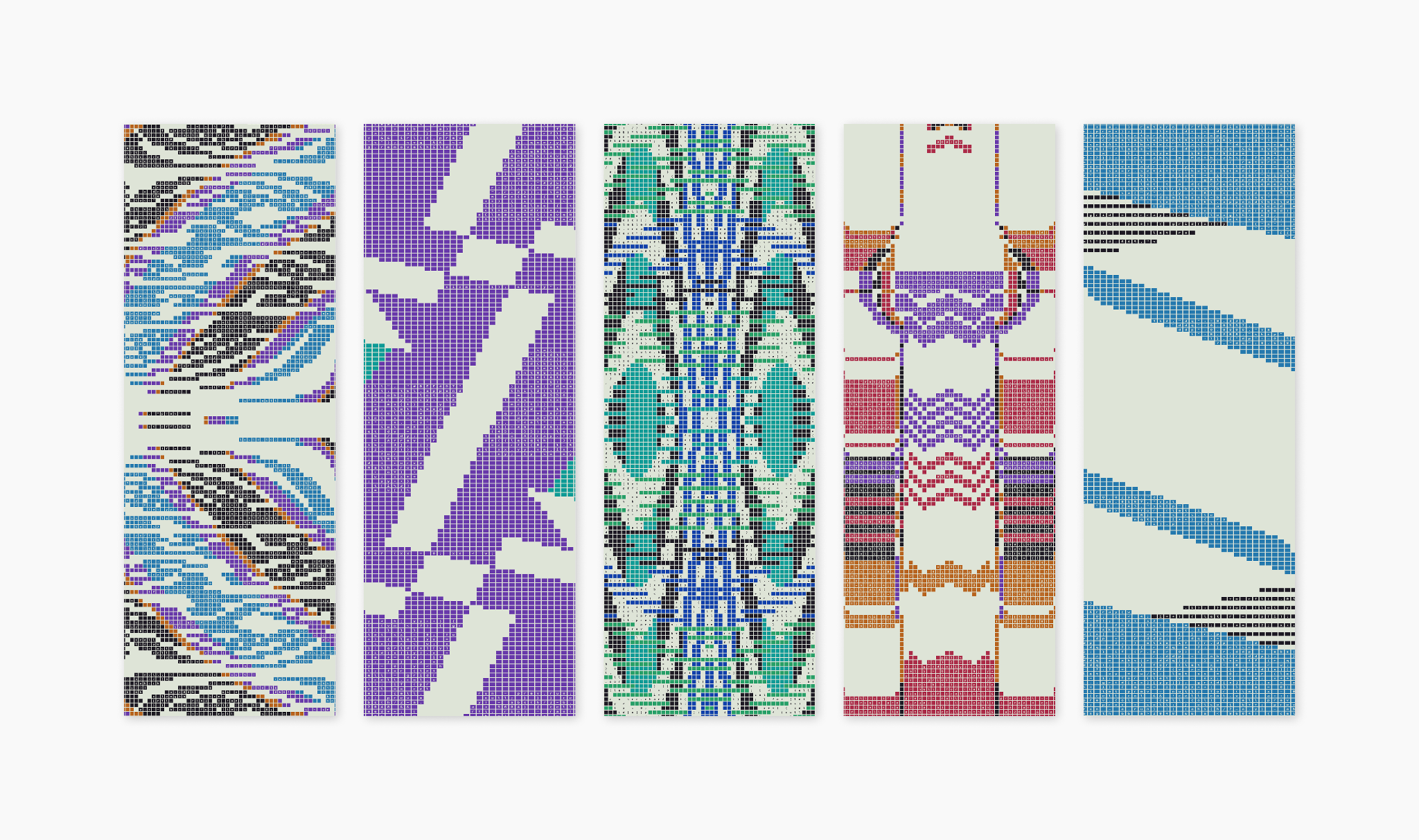
OpenSea: The project involves a meta-generator, where a main script writes a smaller program that renders the artwork. Can you walk us through how this process works and what it revealed to you about generative art?
Larva Labs: As opposed to most (or possible all) other Art Blocks generators, our generator doesn’t generate an image directly. Instead, its output is a smaller generator that will in turn create the artwork, and have the “quine” property of being able to recreate its own source code. So rather than there being a single generator, Quine’s have a unique generator for each token. Some produce just a single output (Perfect-Quine) and some produce an essentially infinite number of outputs (Pseudo-Quine). Each incorporates one of five “engines” which are responsible for laying out the colored cells and are the primary determinant of how they will look. There are other elements that get selectively incorporated, including color schemes, symmetry calculations, and text layout algorithms. While we have always loved minimalism and sought it out in our work, this exercise resulted in a deeper exploration of it than ever before.
OpenSea: Were there any unexpected results or surprises during the creation of Quine, either in the coding process or in the visual outputs?
Larva Labs: The Art Blocks model, where the artist publishes the algorithm and then it is run unsupervised during the minting process, requires the artist to be very confident in its outputs. It is not possible to select the “good” outputs and discard the less desirable ones. This can often lead an artist into making the generator produce very predictable, “safe” outputs. We force ourselves to avoid this instinct, as we want our generator to be capable of occasional extreme outputs that we didn’t expect. So we have tried to walk a fine line between having pleasing outputs every time with occasionally producing interesting and unexpected results. We think we have achieved this with Quine. Each time we simulated a full set of 497 outputs, there were at least a few that genuinely surprised us. We look forward to seeing what surprises are in store when they are finally minted on chain!
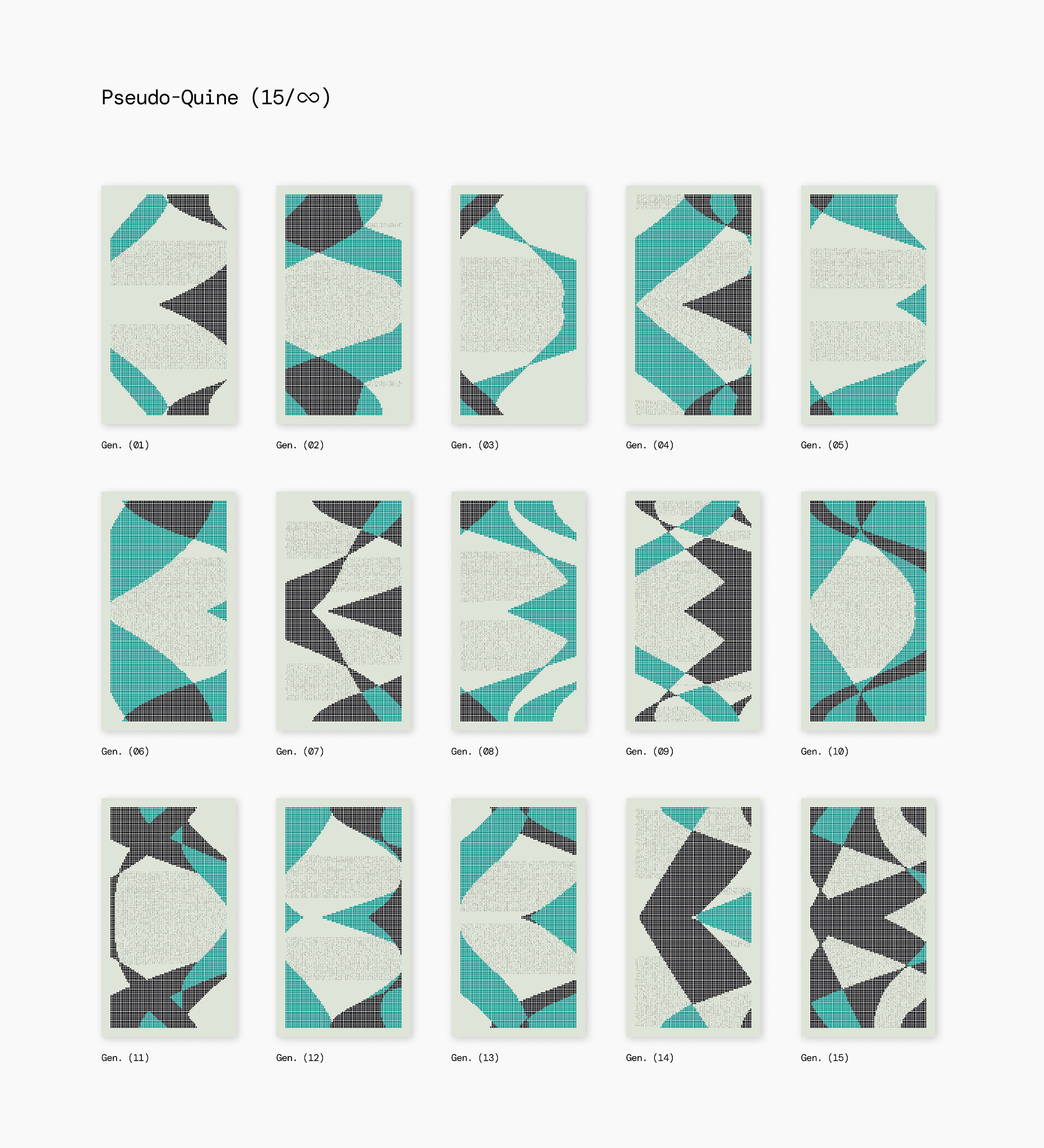
OpenSea: Collectors can engage with Quine through "n-Quines" and "Pseudo-Quines," using post-params to choose how the piece is displayed. Why was it important to introduce this element, and how do you hope it shapes their relationship with the work?
Larva Labs: We love the idea of collectors having agency over how they display or otherwise enjoy our work. Once we had landed on the concept of n-Quines and Pseudo-Quines, we realized that there was no reason why the first generation should have primacy over the others. So once we learned about Art Blocks’s PostParams feature, it immediately made sense that collectors should be able to choose which generation should become the “poster” for their Quine– the generation that is shown when browsing Quines on sites such as Art Blocks or OpenSea. We are quite intrigued to see what choices collectors make with this feature, and how often they make changes.
OpenSea: You've chosen a 26 hour English Auction format where all winners pay the same final price. Why was this structure a good fit for Quine, and how do you see it reflecting the project's ethos?
Larva Labs: We aren’t comfortable setting a price, so the English auction system seems like a fair and reasonable approach to price discovery.
OpenSea: A portion of proceeds will support the NODE Foundation. How does this tie into the broader legacy you hope to leave with Quine and with Art Blocks Curated?
Larva Labs: NODE is committed to the preservation of the legacy of on-chain code-based projects, a mission we strongly believe in ourselves. It’s easy to take digital permanence for granted at a time when it feels like it’s easier than ever to store, find, and retrieve data on the Internet. But we can’t count on that remaining true over a longer period of time, and for this reason the mission of NODE is very dear to us. This theme of on-chain permanence pervades our work and is a core element of Art Blocks’s mission, so it all seemed to tie together quite well.
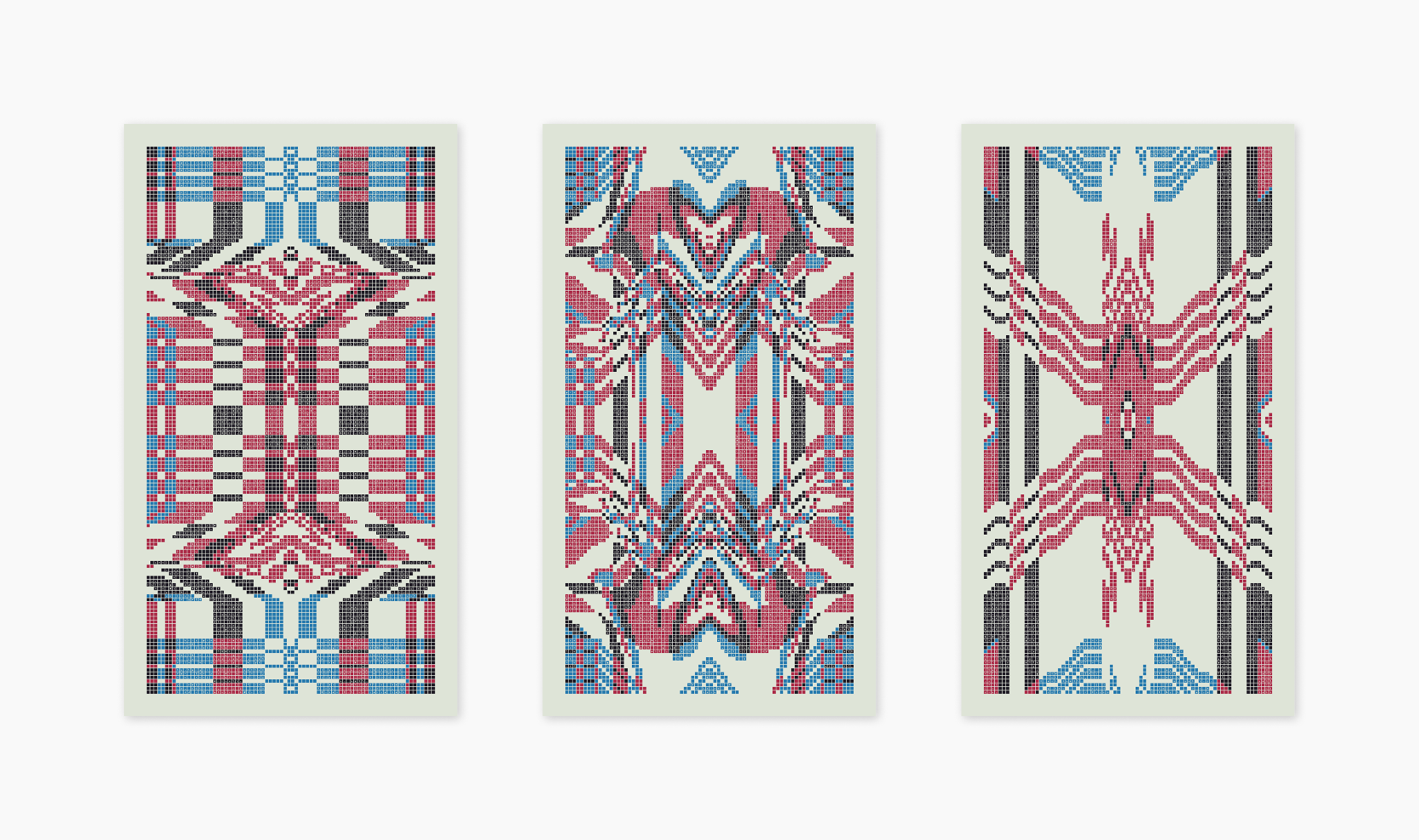
OpenSea: As the final Art Blocks Curated release, what does Quine represent for you personally and for your journey in generative art?
Larva Labs: It has been an incredible honor to close out the storied Curated series, and a real pleasure to work alongside the great folks at Art Blocks to realize this work. Personally for us, this is our first major project in over four years. It feels great to have created something new after all those years and to feel the same passions stirring that we felt during our first three major projects. The nature of our process, where we spend a lot of time exploring and prototyping and maintain a high bar for releasing projects publicly, means that we don’t expect these releases to be very frequent. So, this has been really exciting and meaningful for us to present new work.
OpenSea: Looking ahead, what role do you see concepts like self-referential code and meta-generation playing in the future of generative art, and how do you hope Quine will be remembered within that history?
Larva Labs: We are at a crossroads in the tech industry where the nature of computer code, who produces it, and how it is consumed is set to change dramatically thanks to generative AI. This project is a sort of tribute to small, hand-crafted software, and especially the nerdy, but elegant concept of the quine. The self-referential and self-reproducing nature of the quine also hints at the power of software to propagate itself, as computer worms, viruses, and even “viral apps” do. So we think it is an apt theme for this fascinating but volatile time in history.




.avif)
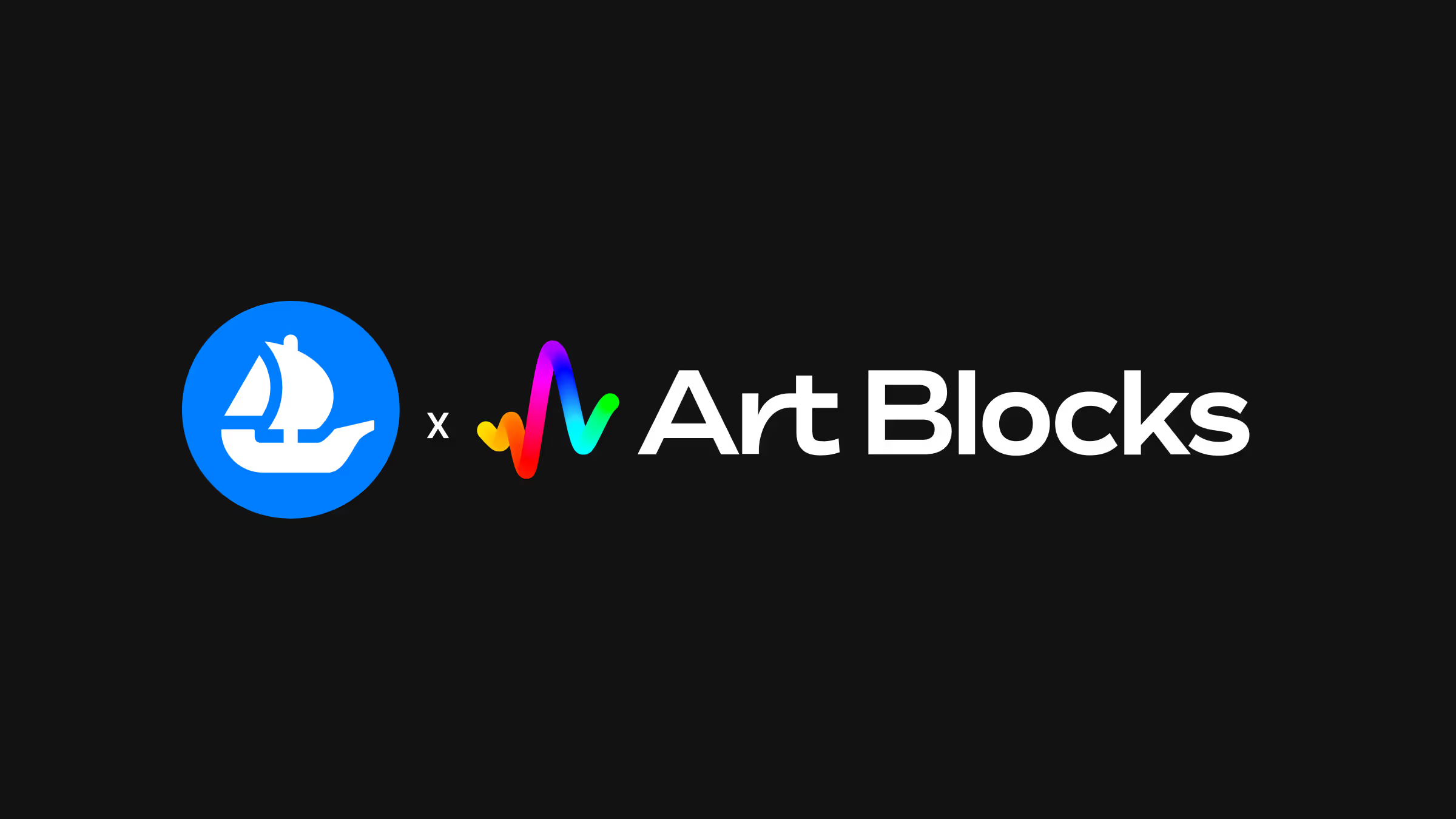
.png)

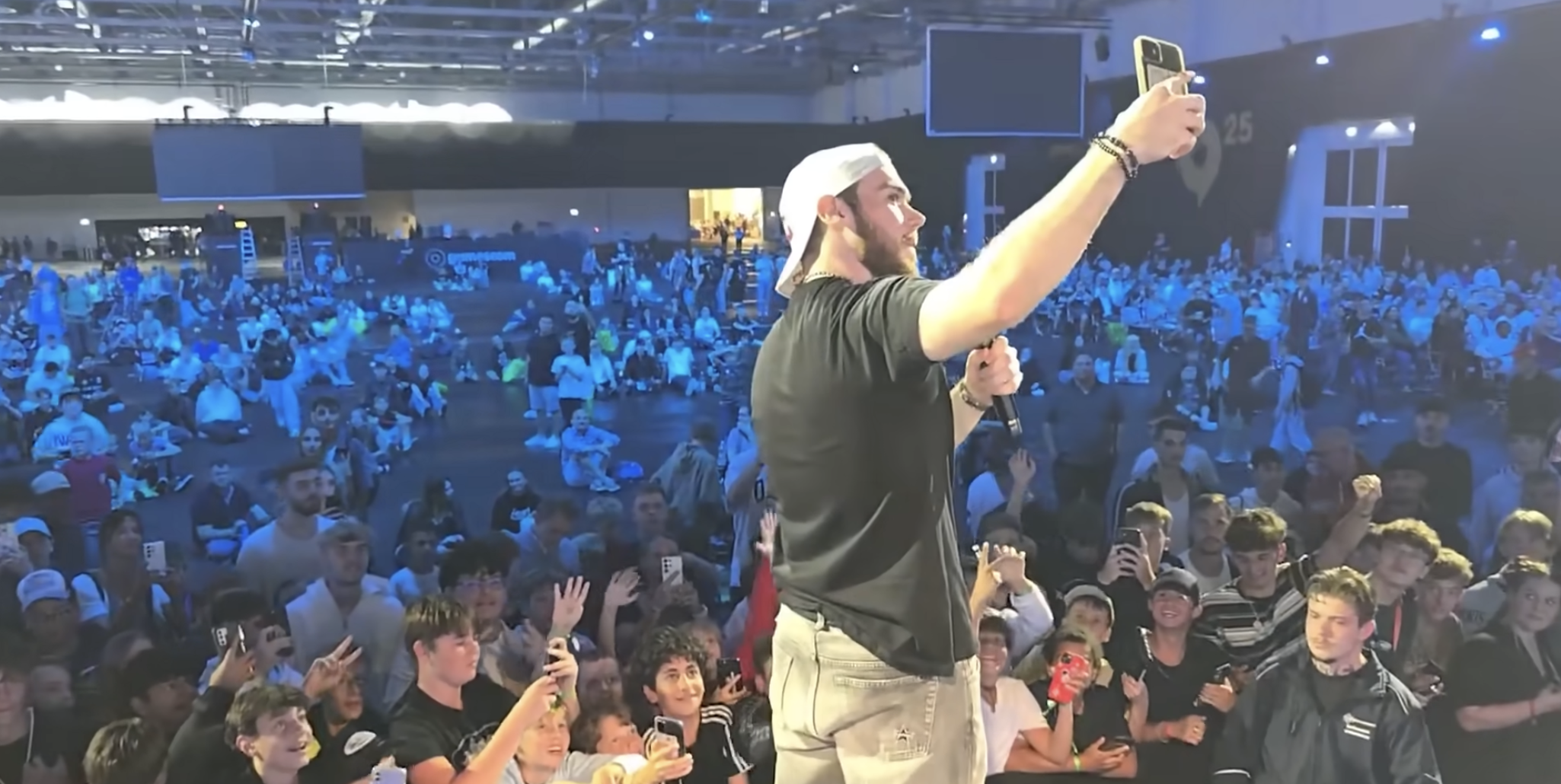
.png)
.png)
.png)
.png)
.png)